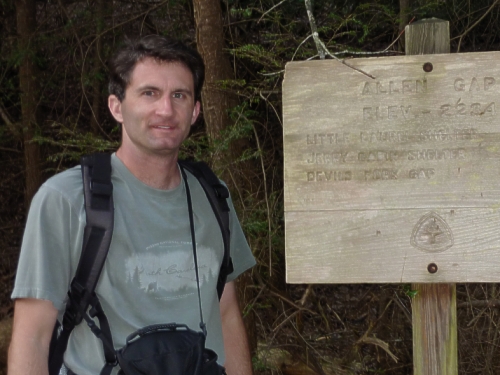
Welcome!
A not-so-brief introduction:
I went into high school with a lukewarm interest in photography; by graduation I couldn’t imagine life without it. Credit for that goes mostly to the stream of National Geographic Special Publications books that flowed into my family’s 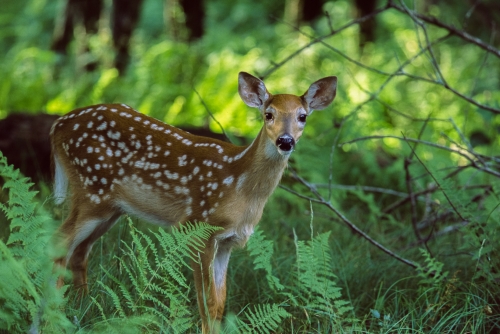 house. I was fascinated that two-dimensional images could capture so completely the personality of a place. My own early pictures weren’t always acceptable, let alone evocative, but there was value in making them. I began to notice moods of light, changes of season, and juxtapositions of form like never before. If an occasional image could recreate an experience in the mind of a viewer, all the better. house. I was fascinated that two-dimensional images could capture so completely the personality of a place. My own early pictures weren’t always acceptable, let alone evocative, but there was value in making them. I began to notice moods of light, changes of season, and juxtapositions of form like never before. If an occasional image could recreate an experience in the mind of a viewer, all the better.
In 1996 I started Garren Creek Photography as a way of selling my growing files of southern Appalachian landscape images to regional magazines. Before long I was writing articles to go with the pictures; a few years later I took on weddings and other assignments. Meanwhile, I kept a "temporary" job in agricultural research at NCSU's Mountain Horticultural Crops Research and Extension Center. Almost simultaneously, my temporary job turned into a permanent position, my daughter was born, and life became a bit too hectic. I happily chose to cut back on commercial photography, work full time in agricultural entomology, and photograph my favorite places on my own time.
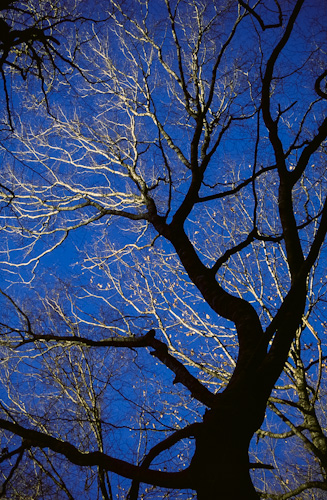 Over the years I have had images or articles appear in Blue Ridge Country, Our State, Backpacker, Country, Appalachian Trail Conservancy calendars, and a variety of other regional and national publications. In 2012, over thirty images were used in the ATC's 75th-anniversary Appalachian Trail coffee-table book (text by Brian King), and in 2017 a few more appeared in Karen Berger's Great Hiking Trails of the World. I have sold prints through local outlets and online. In the galleries here, I have resisted the urge to show only my favorite images in order to present a broader array more representative of my stock files. (The galleries are a fraction of the images available—if you don't see what you want, check the stock list or call or email with a description of what you need.) Over the years I have had images or articles appear in Blue Ridge Country, Our State, Backpacker, Country, Appalachian Trail Conservancy calendars, and a variety of other regional and national publications. In 2012, over thirty images were used in the ATC's 75th-anniversary Appalachian Trail coffee-table book (text by Brian King), and in 2017 a few more appeared in Karen Berger's Great Hiking Trails of the World. I have sold prints through local outlets and online. In the galleries here, I have resisted the urge to show only my favorite images in order to present a broader array more representative of my stock files. (The galleries are a fraction of the images available—if you don't see what you want, check the stock list or call or email with a description of what you need.)
I have been influenced by a host of photographers (including Art Wolfe, David Muench, Sonja Bullaty, Freeman Patterson, Eliot Porter, and William Albert Allard), but my primary inspiration—like that of many others in my generation—comes from the late Galen Rowell. Rowell was a mountaineer first and perfected a style of “participatory” photography that used lightweight 35mm cameras to pursue extraordinary light in remote 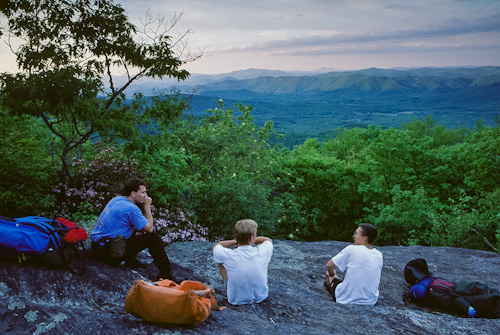 landscapes. Carrying enough equipment to be ready for anything was an impediment to being in the right place at the right time. By his sixties, Rowell had revolutionized the art, and although he used large tripods and numerous accessories when appropriate, he stuck with a bare minimum for the astounding physical adventures that he continued up until his death in a small plane crash. landscapes. Carrying enough equipment to be ready for anything was an impediment to being in the right place at the right time. By his sixties, Rowell had revolutionized the art, and although he used large tripods and numerous accessories when appropriate, he stuck with a bare minimum for the astounding physical adventures that he continued up until his death in a small plane crash.
I don’t share Rowell’s penchant for big wall climbs and long expeditions, but his philosophy fits my own pursuits. Near a vehicle, it’s nice to work in the traditional mode with two cameras, several lenses, and a heavy tripod for maximum versatility. In the Appalachian Trail backcountry, or on the 3,000-foot slopes of Celo Knob, I opt for a single camera, a couple of favorite lenses, and an old two-pound Gitzo tripod that slips into a standard day pack. For running or biking miles of trail, a simple light camera, a single zoom  lens, and a tiny tabletop tripod keep physical and mental baggage to a minimum. lens, and a tiny tabletop tripod keep physical and mental baggage to a minimum.
Now more than ever, photographers must guard against the medium overwhelming the experience. Susan Sontag argued in the 1970s that “[n]eeding to have reality confirmed and experience enhanced by photographs is an aesthetic consumerism to which everyone is now addicted. . . .it is the most irresistible form of mental pollution.” Photographers might balk at their life’s work described as “pollution,” but whenever I feel burdened by equipment or exasperated by wonderful situations that just don’t come across on film, I see her point. A too-rigid "pictures or it didn't happen" mindset is detrimental to both personal fulfillment and photography itself. But on balance, I am confident that the search for images has led me to more sights and places 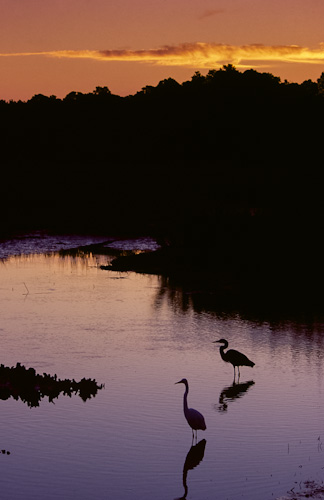 than I ever experienced in my pre-photography days. than I ever experienced in my pre-photography days.
Thus, even in a world overflowing with pictures, photography remains a fascinating pursuit. Some of my favorite haunts are clearly the favorite haunts of others, appearing in photographs so much that even rocks and trees are immediately recognizable. Rather than becoming jaded by repetition, I find myself amazed by the infinite variations of light, season, and every photographer’s personal style. Having additional photographers interpret the Great Smoky Mountains or the Blue Ridge Parkway is no different than having new directors interpret Shakespeare. The sheer amount of imagery in the world testifies to the universal joy of capturing remarkable moments that happen once and never again.
Stephen Schoof |